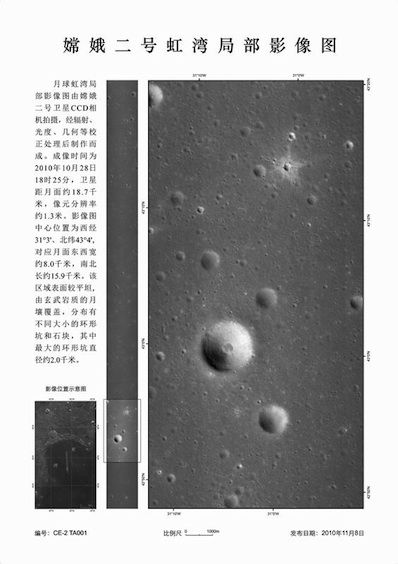China Targets 2013 for Launch of Lunar Landing Mission

Under a new five-year plan unveiled in December, China will continue to make methodical progress in human spaceflight, expand its satellite navigation system, explore the moon and seek space technology partnerships with developing nations.
China also plans to test new rocket systems to haul hefty payloads into Earth orbit with kerosene fuel, a less toxic alternative to hydrazine used on today's Chinese Long March boosters. China is constructing a new spaceport on Hainan Island off the southern coast of the country's mainland.
The fresh five-year plan will kick off in 2012 with the launch of two Shenzhou spaceships to dock with Tiangong 1, a prototype space station module launched in September 2011. An unmanned Shenzhou capsule accomplished China's first robotic docking in orbit in November.
At least one of the Shenzhou missions this year will carry a crew of astronauts.
Chinese officials have not disclosed a timetable for either mission, which are named Shenzhou 9 and Shenzhou 10.
In the next five years, "China will launch space laboratories, manned spaceships and space freighters," the plan says. The country will also "make breakthroughs in and master space station key technologies, including astronauts' medium-term stay, regenerative life support and propellant refueling."
China plans to make technological preparations for the construction of a 100-ton space station and initiate research to land humans on the surface of the moon.
Get the Space.com Newsletter
Breaking space news, the latest updates on rocket launches, skywatching events and more!
Engineers are developing the Chang'e 3 robotic lunar lander for launch in 2013, the second phase of a three-step moon exploration effort. China successfully sent two Chang'e orbiters to the moon in 2007 and 2010, collecting sharp imagery for a high-resolution map of the lunar surface.
Controllers dispatched Chang'e 2 from lunar orbit to a position at the L2 libration point a million miles from Earth, the furthest distance any Chinese probe has ever traveled from Earth.
The third step in the robotic lunar program is to return samples to Earth.
China is also prioritizing Earth observation, communications and navigation satellites.
Nigeria, Venezuela and Pakistan purchased government-owned broadcasting satellites for launch by Chinese rockets, and further craft are under construction in China for Bolivia, Laos and Belarus.
China says it will continue negotiating satellite and launch agreements with developing countries.
Another focus for Chinese space officials will be the continued deployment of the Beidou navigation system, a satellite network designed to provide positioning services independent of the U.S. Air Force's GPS program.
China activated the Beidou system Dec. 27 on a trial basis. Its 10 satellites currently provide services over the Asia-Pacific region, including most of China. The coverage zone stretches from the southern border of Russia to Australia, and from India in the west to the Pacific Ocean in the east.
Global coverage will be possible by 2020 with a constellation of 35 satellites, according to the state-run Xinhua news agency.
Copyright 2012 SpaceflightNow.com, all rights reserved.
Join our Space Forums to keep talking space on the latest missions, night sky and more! And if you have a news tip, correction or comment, let us know at: community@space.com.
Stephen Clark is the Editor of Spaceflight Now, a web-based publication dedicated to covering rocket launches, human spaceflight and exploration. He joined the Spaceflight Now team in 2009 and previously wrote as a senior reporter with the Daily Texan. You can follow Stephen's latest project at SpaceflightNow.com and on Twitter.










